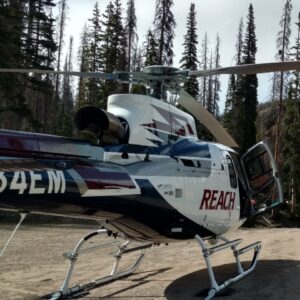If you live in a rural area, far from a big city, it’s important to know about the different levels of trauma centers. This information could be lifesaving in case of a serious injury or accident. Over 40 million Americans live farther than one hour from a level I trauma center – this means that for the most serious of traumatic injuries- their arrival time to the appropriate level of trauma center care falls outside of the Golden Hour and could negatively impact their chances for survival. AirMedCare Network (AMCN) provides affordable emergency air ambulance membership, which eliminates the financial worry over air ambulance bills, when one of our provider’s air ambulances responds to a traumatic injury. We want you to understand the benefits of fast access to the appropriate level of trauma center care and the differences in each of the five levels..
Level I Trauma Center
Level I trauma centers provide the highest level of care. They are usually located in big cities and have a wide range of specialists available at all times. These centers have the resources to treat the most severe injuries and often serve as training centers for new doctors. They also conduct research to improve trauma care. Because of their capabilities, accessing a Level I trauma center can lead to better outcomes after a traumatic injury. For rural residents, this might mean being transferred to a Level I trauma center for specialized care.
Level II Trauma Center
Level II trauma centers also offer high-quality care but may not have all the different specialists available 24/7 like a Level I center. However, they can still handle severe injuries and have experienced trauma surgeons on staff. They can also stabilize patients before transferring them to a Level I center if needed.
Level III Trauma Center
Level III trauma centers are smaller and often found in more rural areas. They have the ability to provide immediate emergency care and perform surgery. They also focus on stabilizing patients with severe injuries before transferring them to a higher-level center if needed. While they may not have as many resources as Level I and II trauma centers, they still play a crucial role in trauma care. If a transfer to a higher level of trauma care is needed, many times the patient will be flown via air ambulance or transported by Critical Care Paramedics via ground ambulance. The transport time and medical stability of the patient, as well as the availability of critical care, play a role in determining the right type of transfer for the patient.
Level IV Trauma Center
Level IV trauma centers are generally found in rural areas and can provide advanced trauma life support before patients are transferred to a higher-level center. They often have a few basic emergency services, and a small team of medical staff trained in trauma care. These centers are important for providing initial care and stabilizing patients quickly. Often times, the more severe traumatic injuries will be transported to another trauma center.
Level V Trauma Center
Level V trauma centers provide initial evaluation, stabilization, and diagnostic capabilities for injured patients. They can prepare patients for transfer to higher-level centers if necessary. These centers are usually located in very rural areas and have limited resources but are crucial for providing immediate care close to the site of injury. Because these centers are often rural and far from a Level I or II trauma center, patients are transferred via air ambulance.
Why Level I Trauma Center Access is Important
For rural residents, having access to a Level I trauma center can make a big difference in recovery from severe injuries. These centers offer the most comprehensive care and have the best resources to treat complex injuries. Although it might take longer to get there, the specialized care provided can greatly improve chances of survival and recovery. An air ambulance can make transport and treatment from the scene to the trauma center faster and more appropriate for the patients’ medical needs. Because air ambulances are equipped like flying ICUs, a higher level of care begins upon their arrival at the scene and can address issues, like blood loss or respiratory failure immediately. AMCN providers respond to all emergencies regardless of insurance, membership or ability to pay, but those who choose membership can recover without the financial worries about air ambulance bills – only when transported by a network provider.
Learn more about how Air Ambulances make a difference in emergency medical response for Rural Residents and see if our membership may be right for your family.
Frequently Asked Questions:
If an AirMedCare Network Provider does not transport you, you will be responsible for payment. Our membership program only covers transports provided by our affiliates.
There is no limit to the number of transports a member may take in a year. Each transport is handled the same way and must be an emergent or time-sensitive transport as determined by a physician (or other appropriate provider) or first responder unaffiliated with AMCN.
With an AirMedCare Network membership, any person or persons who reside under one (residential) roof are covered. In the event we have a member who lives in a duplex or apartment complex, we designate the primary member’s residence/address— that is considered the “one roof”. Undergraduate college students can be covered under their parent’s membership as well as anyone previously residing in the household who is then moved to a permanent care facility.

Air Ambulances are Helping Bridge the Gap in Healthcare for Rural Hospitals
One of the biggest issues in rural healthcare is the lack of healthcare facilities. Many rural areas don’t have enough doctors or hospitals, and appropriate

Tips for Flying while Pregnant
Most pregnancies are uneventful, and women can continue with their daily lives with few restrictions. Flying, however, might not be an activity that is right

Prepare for Travel with Expert Pre-travel Health Tips
Pre-travel health care is important for both domestic and international trips. It helps ensure you are ready to handle any common health problems that might




